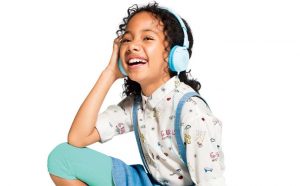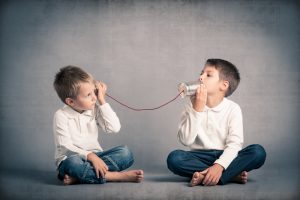Looking at Language
When we look at language development we look at two main areas:
receptive language and expressive language.
RECEPTIVE LANGUAGE: the input.
Receptive language skills refer to our ability to understand and process the language we hear, such as:
- directions
- concepts
- grammar
- vocabulary
- sentence structure
Consider the following scenarios-
1. Your child has started kindergarten this year. The teacher tells the class “After you put your pencils away come and sit on the mat. We are going to read a story before recess.” Not only does your child need to process multiple steps in this instruction, they also must understand that the temporal concepts ‘before’ and ‘after’ refer to the order in which to do things, and the concept ‘on’ refers to location.
It can be easy for children with receptive language difficulties to “fall between the cracks” at school as they can appear to get by, when they are actually watching and copying their peers and relying on visual prompts such as gestures (e.g. pointing) to follow instructions.
2. Your child is listening to a classmate during show and tell. The classmate is telling everyone about their trip to the museum where they saw a T-Rex skeleton. They say “It was amazing because my favourite dinosaur is a T-Rex. I love carnivores.”
To follow what this classmate is talking about your child must understand that ‘amazing’ is a synonym (similar word) of good and ‘because’ is giving a reason why. Having an understanding of the term ‘carnivore’ would also be helpful, and realising this may be a good question to ask during the question time if it was unknown.
EXPRESSIVE LANGUAGE: the output.
Expressive language skills refer to our ability to use language concepts and structures as well as a varied vocabulary.
- using concepts, e.g. “I found my shoes under the bed.” vs “I found my shoes over there.”
- using grammar, e.g. “I lost two teeth on the weekend.” vs “I losed two tooths on the weekend.”
- expanding vocabulary, e.g. “I thought the enormous slide would be terrifying but it was really fun!” vs “I thought the slide would be scary but it was fun.”
- expanding sentence structure, e.g. “The spotty dog is running quickly.” vs “The dog is running.”
- using complex sentences, e.g. “I’m sad because I fell over at recess today.” vs “I feel sad.”
There is also a third area of language – pragmatic language. This refers to how we use language in social contexts. Pragmatic language skills are often addressed as social skills.
.
All images used in this post were sourced via Google Images




